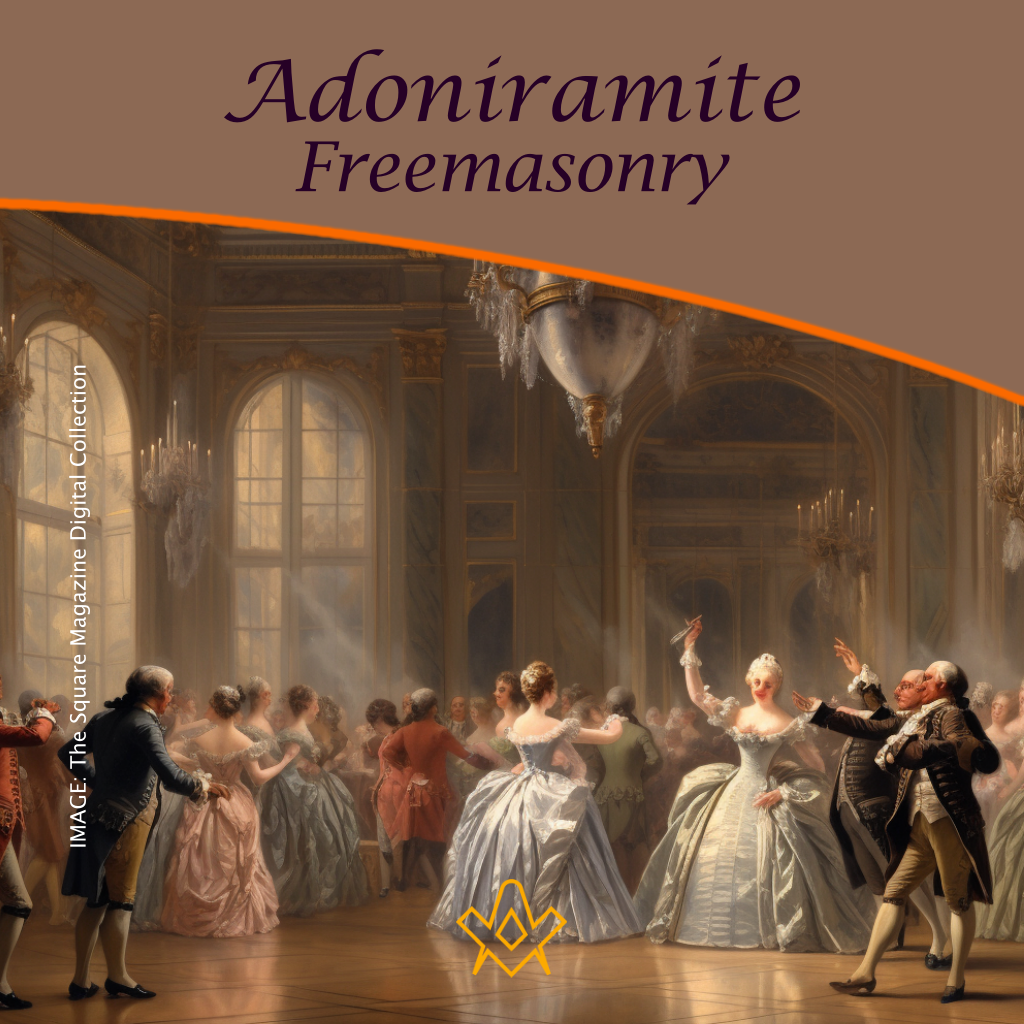Adoniramite Freemasonry is an organization that allows the initiation of females into ceremonies and rituals resembling those of Freemasonry.
The origins of Adoptive Freemasonry can be traced back to the 18th century in France. It was influenced by secret associations that attempted to imitate Freemasonry in their organization, albeit without admitting female members. These early associations paved the way for the development of the Lodges of Adoption, which eventually became closely associated with regular Freemasonry.
The exact date of the establishment of Adoptive Freemasonry is a topic of debate. Some theories claim that it originated in the 17th century and was introduced by Queen Henrietta Maria, the widow of Charles I of England.
According to this theory, the queen was made aware of the secret efforts made by Freemasons in England to support her family and throne. However, this theory lacks historical evidence and is generally regarded as untenable.
A more plausible theory suggests that Adoptive Freemasonry emerged in the mid-18th century in France. Various secret associations sprung up in the country, attempting to imitate Freemasonry in their forms and ceremonies.
These early associations were convivial and gallant in nature, focusing on secrecy and symbolic rituals.
Examples include the Ordre des Félicitaires in 1743, the Knights and Ladies of the Anchor in 1745, and the Ordre des Fendeurs in 1747.
IMAGE LINKED: the square magazine collection Attribution 4.0 International (CC BY 4.0)
Out of these imitation societies, the true Lodges of Adoption eventually emerged. These lodges retained the secrecy and benevolence of the earlier associations but introduced a more refined and imitative form of Freemasonry.
The recognition of these Lodges by the regular Freemasonry institutions occurred in the 1770s, with the Grand Orient of France assuming the role of protecting and regulating Adoniramite Freemasonry.
Under the regulations established in 1774, the Lodges of Adoption had to be affiliated with a regular Lodge of Freemasons and were limited to admitting only Freemasons as male members.
The Lodges of Adoption also developed their own rituals and ceremonies, organizing them into four degrees: Apprentice, Compagnonne, Maîtresse, and Parfaite Maçonne. A fifth degree, Sublime Dame Ecossaise or Sovereign Illustrious Scottish Dame, was later added.
These degrees differed significantly from those of regular Freemasonry. While they shared some symbolic elements, the rituals and ceremonies of Adoptive Freemasonry were distinct and focused more on imitating the virtues of Freemasonry rather than imparting its true teachings and practices.
Nonetheless, the Lodges of Adoption gained popularity in France and spread to other European countries such as Germany, Poland, and Russia.

DUCHESS OF BOURBON, LOUISE MARIE THÉRÈSE BATHILDE; (1750 – 1822) BY CHARLES LEPEINTRE
IMAGE LINKED: wikimedia Attribution 4.0 International (CC BY 4.0)
The Lodges of Adoption attracted the attention and participation of women from the highest ranks of society, including nobles, royalty, and renowned literary figures.
For example, the Duchess of Bourbon presided over the Lodge of Saint Antoine, the Duchess of Chartres and Madame Helvetius were involved in other Lodges, and the Lodge of La Candeur counted the Duchess of Bourbon and the Princess Lamballe among its members.
These women not only enjoyed the exclusive nature of the Lodges but also engaged in acts of charity and participated in banquets and social gatherings.
Despite enjoying widespread popularity, Adoptive Freemasonry faced criticism from some Freemasons who argued that the inclusion of women in Masonic ceremonies and rituals deviated from the essential principles of the Masonic Order.
The Grand Orient of France, while initially hesitant to accept the Lodges of Adoption, eventually recognized their importance and established rules for their governance.
The Lodges flourished under the French Empire, with Empress Josephine herself presiding over one in Strasbourg. However, during the turbulent period of the French Revolution, the Lodges of Adoption, like many other aspects of society, suffered a decline.
With the restoration of a regular government, the Lodges of Adoption regained their popularity in France. They continued to exist throughout the 19th century, although they were less fashionable during the Restoration period. Despite periodic fluctuations in popularity, the Lodges of Adoption remained a unique and distinct feature of French Freemasonry.
Adoptive Freemasonry also made its way to Italy, where it was associated with the Carbonari, a secret political society. In Naples, a Lodge of Adoption was established under the presidency of Queen Caroline, the wife of Ferdinand II.
The members of this Lodge, known as Giardiniere or Female Gardeners, paralleled the male Carbonari by referring to each other as “Cugine” or Female Cousins. This version of Adoptive Freemasonry flourished as long as the Grand Lodge of Carbonari existed in Naples.
IMAGE LINKED: the square magazine collection Attribution 4.0 International (CC BY 4.0)
Despite the enthusiasm and popularity of Adoptive Freemasonry, it faced criticism from several prominent Freemasons. Some argued that the inclusion of women in Masonic ceremonies was not in accordance with the essential principles of the Masonic Order.
Others questioned the prudence of holding female assemblies with ceremonies referred to as “Masonic.”
However, it is worth noting that Adoptive Freemasonry did emphasize charity and social gatherings, contributing to its appeal as a virtuous and enjoyable pursuit.
Over time, Adoptive Freemasonry declined in popularity. Today, regular Freemasonry remains widely practiced and recognized, while the Lodges of Adoption have lost much of their prominence.
However, their historical significance as an early attempt to include women in Masonic-like ceremonies and rituals should not be overlooked.
Recent Articles: Women Freemasons
 Freemasonry and Women's Rights - P4 The Freemason judge who ruled women were 'persons' |
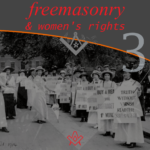 Freemasonry and Women's Rights - P3 Who embraced and influenced the women’s rights and suffragette movements in Europe in the late nineteenth and early twentieth century |
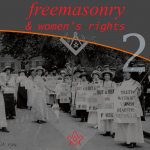 Freemasonry and Women's Rights - P2 Second part, in the introductory series exploring the history of mixed, Co- and female Freemasonry, and how the fraternity and its members helped progress the emancipation and rights of women. |
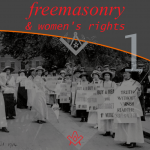 Freemasonry and Women's Rights - P1 A two-part introductory series exploring the history of mixed, Co- and female Freemasonry, and how the fraternity and its members helped progress the emancipation and rights of women. |
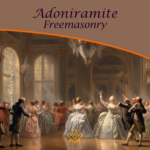 Adoniramite Freemasonry, also known as Adoptive Freemasonry, emerged in 18th-century France as a unique initiation system for women. Mimicking the secrecy and symbolism of regular Freemasonry, these Lodges of Adoption attracted noblewomen, literary figures, and even royalty. Explore the origins, rituals, and controversies surrounding this intriguing branch of Freemasonry. |
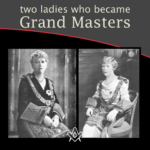 Two ladies who became Grand Masters Who were the two ladies, mother and daughter who become Grand Masters of Honourable Fraternity of Ancient Freemasons |
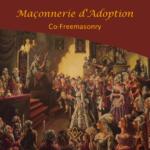 A look at Adoptive Lodges that were established in France for the initiation of females; a short Extract from the Encyclopedia Of Freemasonry |
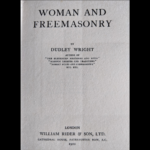 Published in 1922, this interesting, and whimsical book was penned by Dudley Wright |
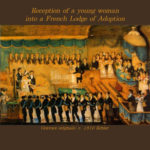 Look at the History of Women in Freemasonry. Although Several women had been introduced to Freemasonry prior to the 18th century, it was more by accident than invitation. |
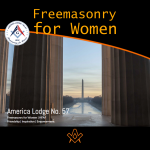 The Great American Experiment, a film by HFAF documenting the Consecration and Installation of Officers of America Lodge No. 57 on May 25, 2019 |
masonic knowledge
to be a better citizen of the world
share the square with two brothers

click image to open email app on mobile device
